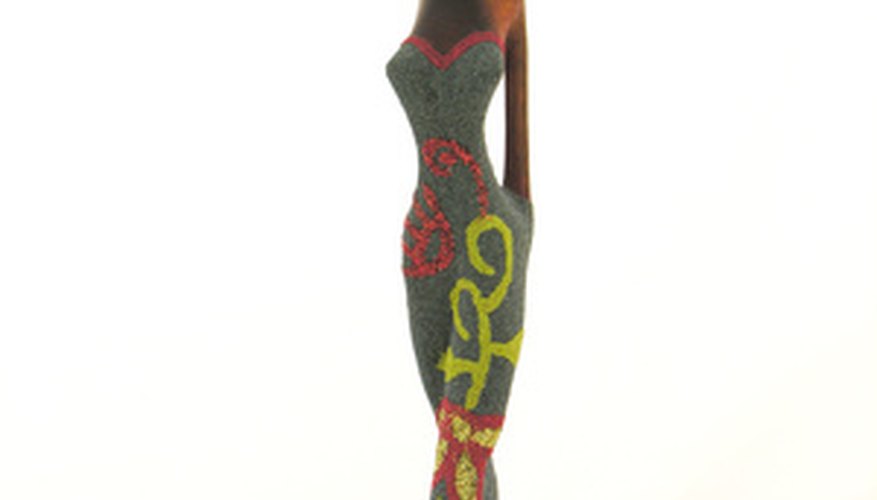How To Repair A Resin Statue
How to Repair an Acrylic Resin Statue

Acrylic resin is a type of plastic that, when heated, becomes a liquid, assuasive for pouring and moulding into figurines and statues. Acrylic resin is strong and durable plenty for outdoor utilize along with indoor displays. When accidents occur, statues of this type can crack or chip, and parts tin can break off entirely. However, acrylic resin statues are easily repairable.
- Acrylic resin is a type of plastic that, when heated, becomes a liquid, assuasive for pouring and moulding into figurines and statues.
Wipe the statue with a clammy rag or wash with soapy water to remove dirt and dust from crack.
Apply a flexible putty knife or corner of a credit card to remove dust and dirt from inside the cleft.
Apply a small corporeality of water to the crevice to dampen the inside of the crack and achieve a better glue bail.
Apply a line of cyanoacrylate glue to the crack; build the glue up until flush with the surface of the statue. Cyanoacrylate gum dries inside seconds of awarding and volition bond better when the crack is clammy because of the chemical reaction between the glue and water.
- Apply a line of cyanoacrylate gum to the crack; build the gum upward until affluent with the surface of the statue.
Buff the repair line smooth with a micromesh sanding pad and touch up the damage with acrylic paint.
Remove modest, loose pieces of acrylic resin with a fingernail or border of a credit card.
Wipe the damaged area with a damp fabric to remove dirt and debris.
Place a plastic bag over fingertips or vesture latex gloves to keep fingers free of hard-to-remove putty, then press two-part epoxy putty firmly into the chipped surface area. Two-part epoxy putty consists of claylike putty and a hardening agent.
Press and mould the putty to match the surface of the statue and let the putty to dry out completely, unremarkably within five to ten minutes.
Sand the repair with extra-fine sandpaper, wipe away grit, rub with a micromesh sanding pad, wipe away dust and paint the area with matching acrylic paint.
- Press and mould the putty to match the surface of the statue and allow the putty to dry completely, usually inside five to ten minutes.
- Sand the repair with actress-fine sandpaper, wipe away dust, rub with a micromesh sanding pad, wipe away dust and paint the area with matching acrylic pigment.
Wipe the statue and cleaved edges clean with a damp rag.
Sand the edges of the break lightly with fine-grit sandpaper and remove loose pieces effectually the intermission. Wipe off sanding grit with a damp cloth.
Wet the edges of the break lightly with plain water and apply cyanoacrylate mucilage. Quickly replace the broken piece because the mucilage dries inside seconds.
Fill in uneven, pocket-sized lines around the pause with cyanoacrylate glue or large gaps with 2-part epoxy putty. Permit to dry fully, generally inside less than 10 minutes.
Buff the repair smooth with actress-fine sandpaper and then rub with a micromesh sanding pad. Utilise acrylic pigment to further disguise the damage and restore the statue.
Work in a well-ventilated room when using cyanoacrylate glue.
Source: https://www.ehow.co.uk/how_5962967_repair-broken-resin-statues.html

0 Response to "How To Repair A Resin Statue"
Post a Comment